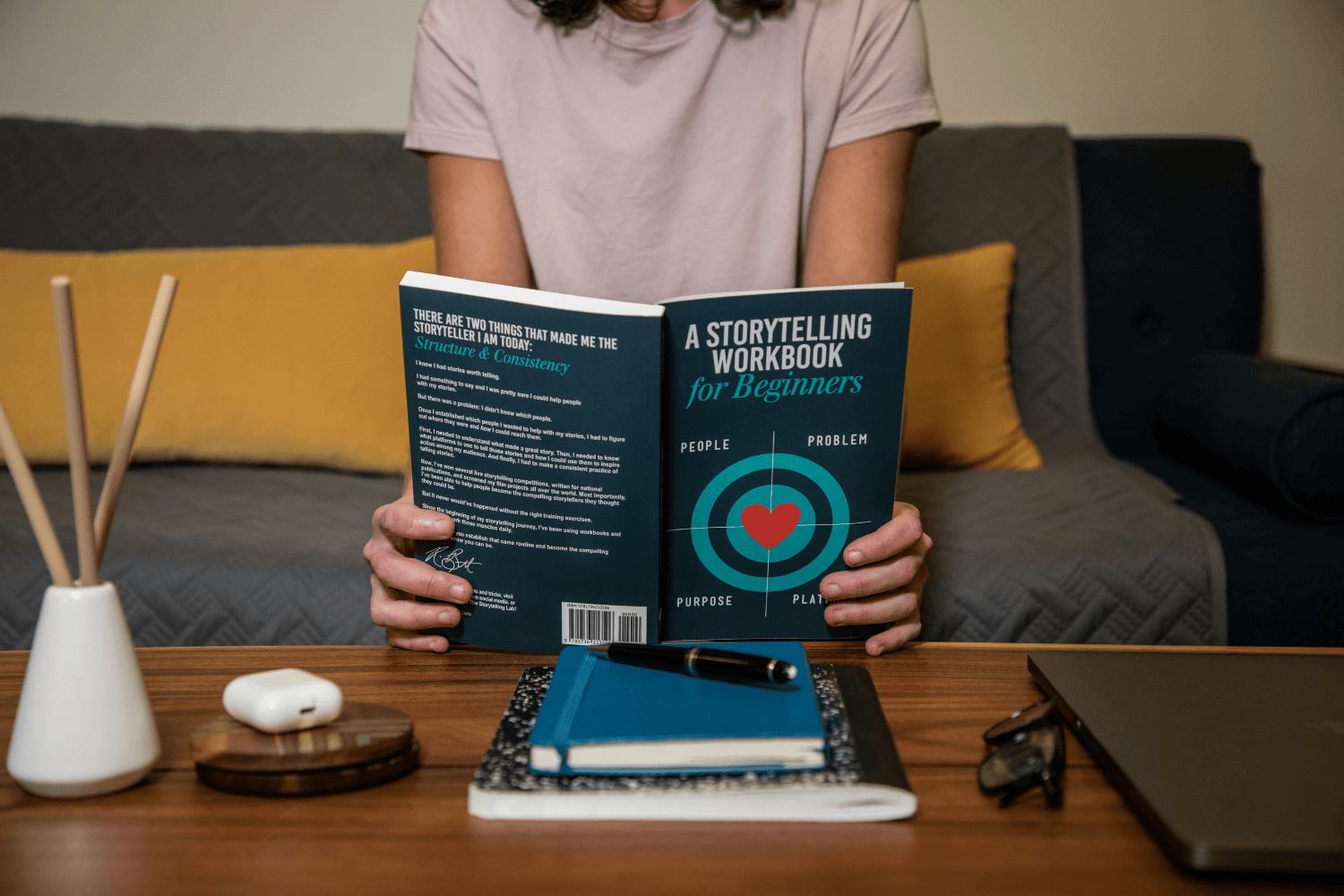Top 10 Famous Ad Campaigns Every Aspiring Creative Should Study
Explore 10 of advertising’s most iconic campaigns and discover what made them groundbreaking. Learn how these legendary ads connected with audiences on a deep level, inspired culture, and shaped the creative industry—and how you can use these lessons to elevate your own portfolio and work.
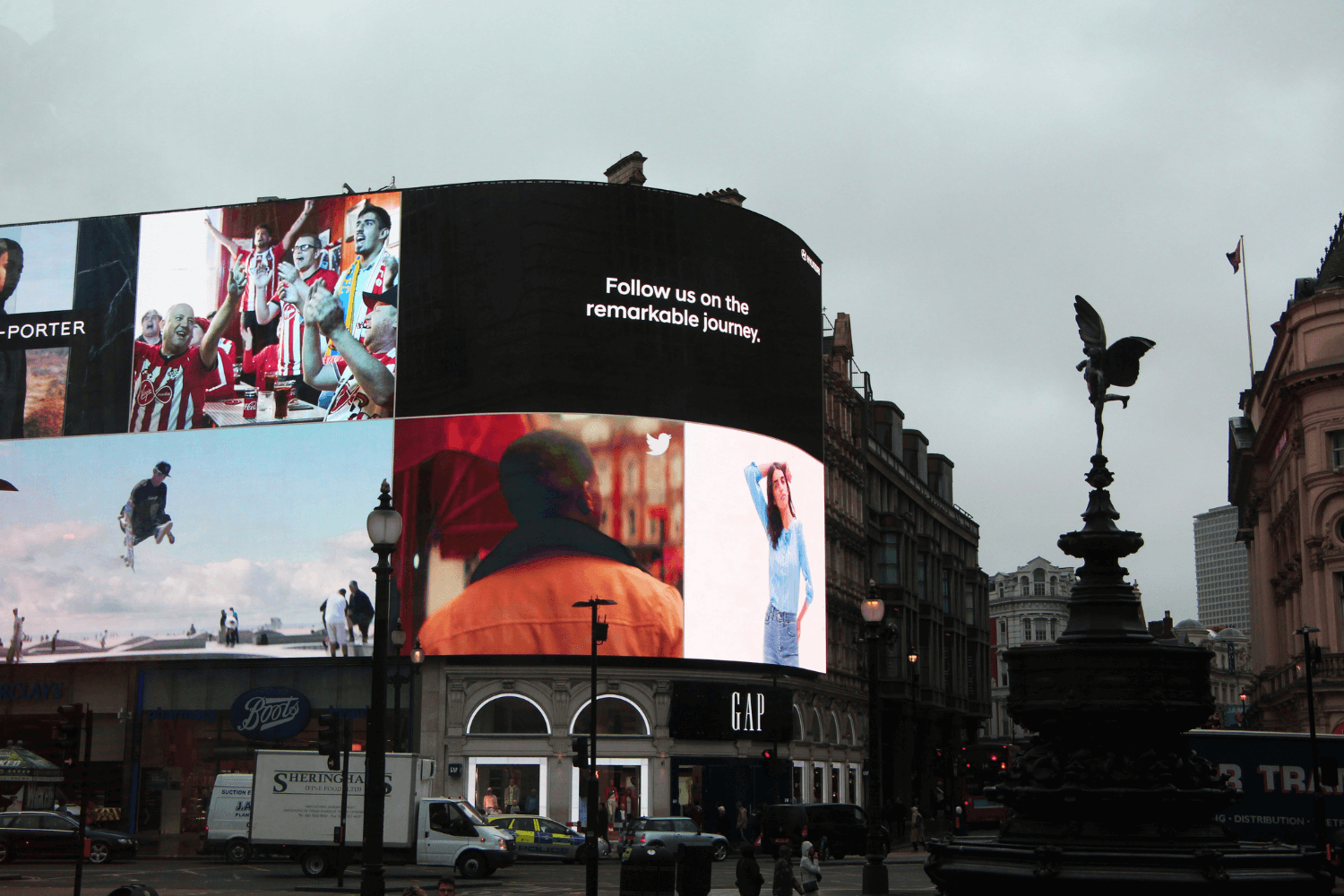
Have you ever heard the phrase “Good artists copy, great artists steal”? It means: while less talented artists imitate, the truly creative ones take (steal) inspiration and transform it into something completely new and original. It really should be the motto of this industry. Because creating great ads that really, truly solve clients’ business problems is not an easy task, so the best professionals always study the most iconic advertising campaigns. It’s essential for creative growth.
History’s greatest ad campaigns have shaped culture, shifted public opinion, and often redefined what brands (and consumers) believe is possible. Here’s a look at how some of the greatest ad campaigns in history did exactly that—and why they’re still studied, cited, and mimicked today. And when you study advertising’s most iconic campaigns, you’re able to backtrack how they got to the idea itself. Often, you’ll realize how simple the thought process likely was—and that you can think of an idea that great too.
Let’s break down 10 of advertising’s most iconic campaigns and discuss what made them relevant, how the idea broke through, and how to reach full-blown creative consciousness to elevate the work in your portfolio.
Campaign 1: Just Do It—Nike
How it started:
In the late 1980s, fitness was booming, but it was intimidating. Most people didn’t see themselves as the “workout” type, let alone athletes. That’s when Nike realized its true competitor wasn’t another brand, it was self-doubt. They realized that even the most elite of athletes get nervous to perform, every gym rat sometimes lacks motivation, and that one Joe Shmoe from Ohio just doesn’t know where to start. The brand could be the motivator.
The creative breakthrough:
“Just Do It” was the perfect line for this audience. When it launched, it immediately resonated with the world. It’s an encouragement, a common phrase, that “little push” someone needs, and a radically simple line. It cut through the fear, self-doubt, laziness, and intimidation every human experiences, and inspired action, inspiration, motivation, and courage. This goldmine of that human truth birthed a campaign that was endlessly adaptable.
Big takeaway:
Rather than just scratching the surface of your target audience, tap into emotional barriers, not just physical ones. Put yourself in the shoes of the consumer and walk a mile. Give every piece of your campaign a “why” and make your big idea easily adaptable. If your idea empowers, inspires, and excites people in a relatable way, it has staying power.
Campaign 2: Think Different—Apple
How it started:
In 1997, Apple was an underdog, losing market share to the ever-growing Microsoft. Their goal was to breathe new life into the brand’s image and reconnect with tech-savvy consumers. Their target audience, specifically within the creative industry, wanted a reason to choose Apple over the status quo. They wanted to feel like they were counter-culture.
Thinkers, artists, misfits, thought leaders were always identified as “the crazy ones.” So, Apple adapted to that attitude. They didn’t have to show off flashy designs or use tech-forward language. No, they wanted to go against that entirely. In a time when IBM was getting a foothold in the industry, they chose to challenge their competitors' very slogan, which was “Think.”
The creative breakthrough:
That challenge was shown very simply, and very strategically. The “Think Different” campaign highlighted an intuitive operating system that appealed to creative, right-brained individuals. It emphasized a personal and emotional connection to creativity, rather than just technical superiority and cost.
While IBM encouraged people to just “Think,” Apple challenged consumers to “Think Different.” The creative assets celebrated “the crazy ones”—like Einstein, Gandhi, MLK, and John Lennon. An emotional ode to the icons who see the world through a different lens, without showing a single product.
Big takeaway:
Many clients will ask you to clutter work with CTAs, product features, brand assets, or logos. After all, we can’t all work for Apple. However, if you want to elevate your ideas and, in turn, your portfolio, think about how the brand can associate with a belief system.
Sometimes, simple is better, as it lets the consumer’s mind wander. While their mind is wandering, they’ll probably think about the brand. And getting a consumer to think about your brand (preferably in a positive light) is your main job. When you can make people feel that using your product is a reflection of who they are, you have a campaign that lasts.
Campaign 3: Share a Coke—Coca-Cola
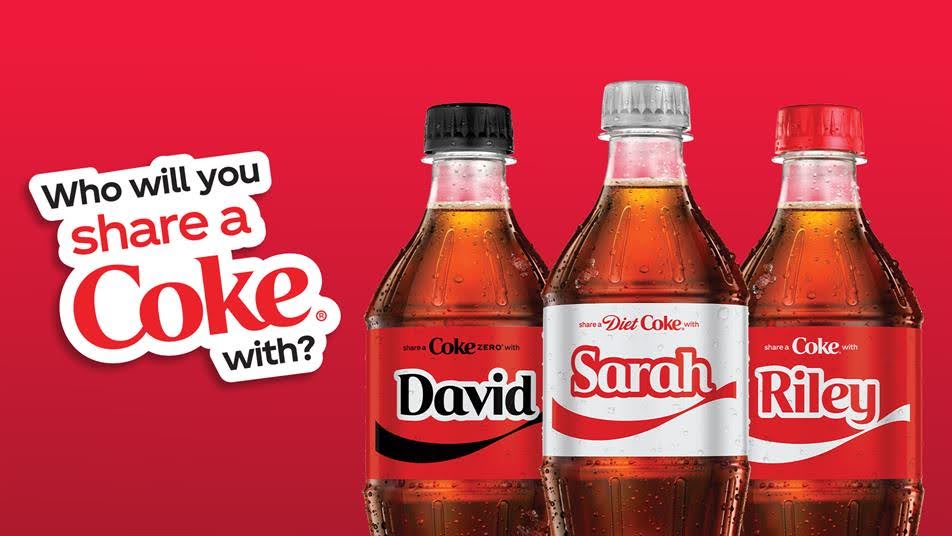
How it started:
Coca-Cola is one of, if not the most, recognized brand around the world. With the brand being so widespread across the globe, it was hard for consumers to feel like they were part of the brand. A target audience of Millennials craved personalized experiences and weren’t connecting with mass-market soda brands at the time. So, Coca-Cola built a campaign that connected with their audience and inspired a sense of community and ownership with their products.
The creative breakthrough:
Remember when you were a kid and any time you saw keychains with names, you made it your personal mission to find the one that had yours? We can imagine that sort of memory may have led to this big campaign. People love seeing their own names. Coca-Cola has some of the most recognizable branding across hundreds of markets. What if the two could be combined?
Swapping out the main logo for real people’s names was a simple way to personalize a global product and allow consumers to truly be involved and included in the brand. Imagine walking into a store and seeing the iconic Coca-Cola bottle, but instead of the brand name, you see your name. Then your best friend’s name. Or your sibling’s name. You wouldn’t just buy one Coke for yourself; you’d buy several to share. Designing products with first names invited people to search, gift, and share—driving purchase through a deeper personal connection.
Big takeaway:
Make campaigns personal and ownable. When you’re able to give people something to find themselves in, you have power. Expand your thinking beyond the assigned niche target audience. How could your creative problem-solving spark joy or nostalgia for all?
Campaign 4: The Man Your Man Could Smell Like—Old Spice
How it started:
2010 saw a massive shift in culture. Technology was growing, Instagram was born, people were tattooing handlebar mustaches on their fingers, and everyone was a hipster. This made Old Spice start to lose relevance with young men. Stuck in this conundrum, the brand needed to find an insight it could really build on.
This came at a time when most men’s brands clung to outdated macho tropes. When they realized that women were actually the ones buying the products, Old Spice made the decision to speak to the women directly, while poking fun at typical men’s advertising. It was a shift that made the brand feel fresh, self-aware, and cool again.
The creative breakthrough:
When Old Spice launched “The Man Your Man Could Smell Like,” it turned advertising on its head. Talking to women instead of men for a men’s product? It was unexpected. The ad aired during the Super Bowl and was simultaneously shared online. In an era where the internet was making the rules, the campaign almost instantly became a pop culture icon.
Seemingly inspired by the iconic Fabio (from the romance novels your grandma reads), Old Spice tapped Isaiah Mustafa to humorously seduce more women to buy the product. The ad’s surreal humor, incredible and charming writing, rapid-fire delivery, and shirtless-on-a-horse absurdity made it impossible to ignore and totally viral. On top of boosting sales, it gave everyone something to talk about and memeify for years to come.
Big takeaway:
You don’t always have to stick to the status quo. You’re an artist, after all! Consider challenging category norms with a fresh tone, fresh visuals, or something completely unexpected. Figure out who the REAL buyer is, not just what focus groups say. Speak to that authentic buyer and entertain them along the way. If your campaign stays rooted in a good strategy, stays consistent with messaging, and is actually fun to watch, you can sell anything.
Campaign 5: You’re Not You When You’re Hungry—Snickers
How it started:
By 2010, brands were moving beyond product features and taste claims. Emotional insight and storytelling were becoming the gold standard. People didn’t want to just buy a product; they wanted to feel something or see themselves in it. Millennials (the key target audience for most campaigns at the time) valued authenticity and humor, so the real way brands could win them over was to not take themselves too seriously.
Snickers realized that most people didn’t see candy bars as essential. And at the time, candy ads were mostly about taste or fun. It was time for Snickers to shift the narrative, and they had a good product on their side: Snickers was a more substantial option, as it was full of peanuts. Their insight tapped into this universal, every-human-experiences-it truth: hunger messes with your mood. It was an adaptable platform perfect for hilarious creativity across mediums.
The creative breakthrough:
We’ve all fallen victim to being “hangry” and sometimes even caught in the crossfire of other people’s “hangry”. Snickers’ insight wasn’t just that people get “hangry,” they get dramatic, turning them into a totally different version of themselves. The insight was relatable, and the tagline was simple: “You’re not you when you’re hungry.”
What better way to bring that tagline to life than to create absurdly comedic ads where hungry people transform into well-known celebrities like Betty White, Robin Williams, Willem Dafoe, etc., as their dramatic alter-ego. The structure was so repeatable that it practically built a franchise. Suddenly, a candy bar had a personality, but more importantly, a purpose. “You’re Not You When You’re Hungry” positioned Snickers as an essential snack to get when you’re not feeling like yourself.
Big takeaway:
The best advertising campaigns come from a human truth. Not a focus group, or because “the client said so,” but a truth that people can really relate to, even if they’ve never put it into words before.
In terms of pulling inspiration from this campaign to elevate your own, try exaggerating that human-centered truth you find. Playing around with turning a product benefit into a memorable personality trait creates humor and stickiness that consumers can’t get enough of.
Campaign 6: FCK—KFC
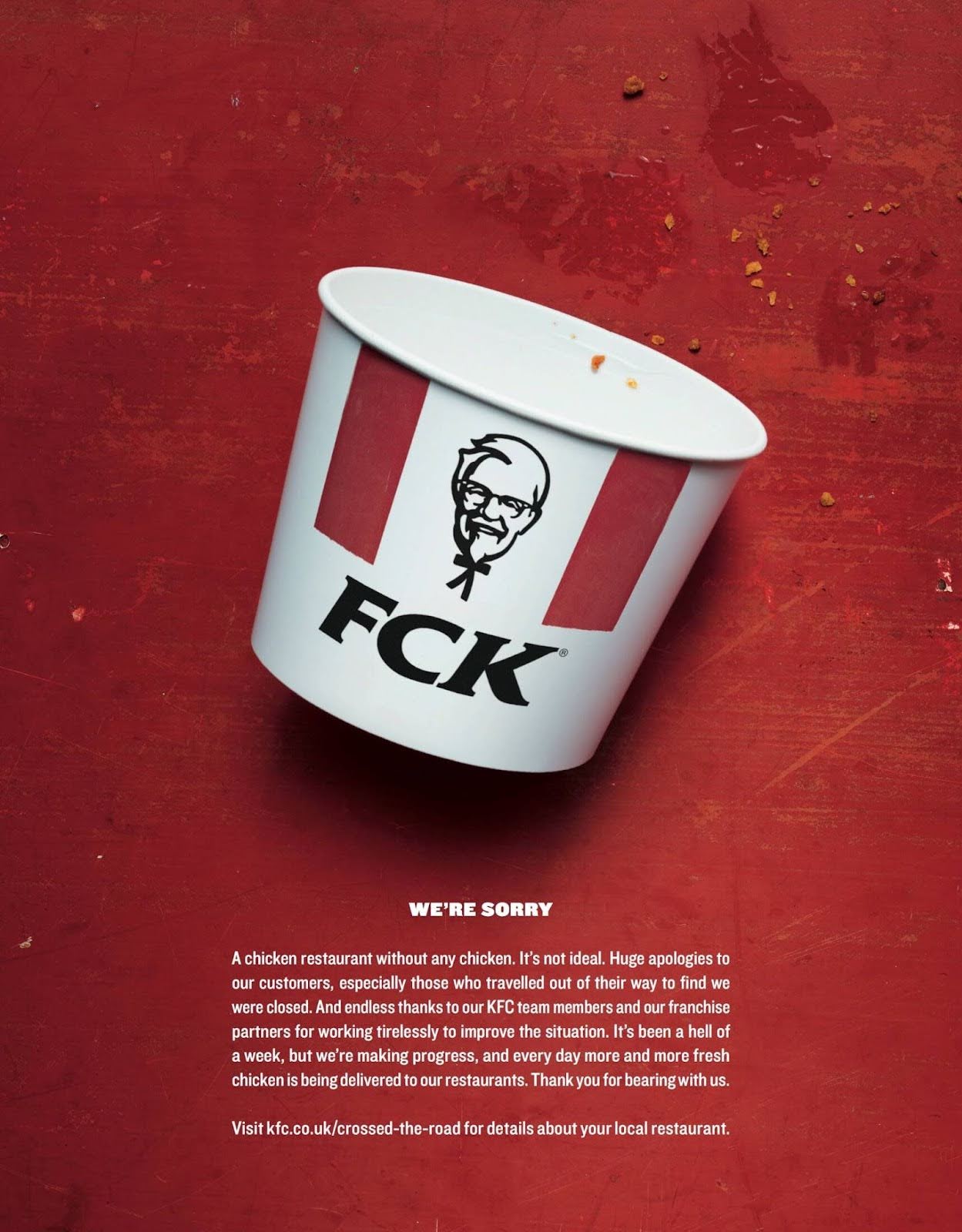
How it started:
In 2018, KFC ran out of chicken in their UK locations. A chicken shop with no chicken? Talk about a PR nightmare. This came at a time when airing out your grievances on social media was the new norm. Customers were rightfully outraged, bashing the brand on all media.
How does a brand respond without upsetting their customer base even more? Rather than denying fault or giving a vague corporate response, KFC leaned into the mishap with humility and cleverness, knowing humor could help defuse tension and perhaps even make customers forget about it altogether.
Creative breakthrough:
In the UK, “f*ck” is a much more commonly used term. It’s not really as offensive a word as it is seen in the US. And strangely enough, KFC already contains the three main letters to identify what the word is. All it took was a simple logo change to “FCK” and a full-page, cheeky apology underneath an empty chicken bucket with their “new” logo.
It was a simple reorganization and a play on what most customers were saying anyway when they found out the chains had to close until they restocked. They launched the print ad just three days after their chicken crisis, and the apology flipped the script entirely. The anger turned into applause. The brand made people laugh. They stayed true to their consumers rather than giving out a clammy, half-hearted script.
The ad became known all over the globe and won everyone’s hearts. By day 5, it was being talked about on thousands of social media pages, news channels, online and print articles, and word-of-mouth. The print ad showed up only once in UK newspapers and generated over 1 billion impressions. To this day, it’s one of the best examples of earned media there is. And to think all it took was a rearrangement of letters.
Big takeaway:
Sometimes simplicity, bluntness, humor, and humanity are all it takes to make an idea great. In the case your brief asks you to revamp a brand because of a PR nightmare, create an idea that takes responsibility with grace and lightheartedness. Like always, know who you’re talking to. Don’t be afraid to be bold, because a brand having self-awareness doesn’t just earn respect, it earns headlines.
Campaign 7: I’m Lovin’ It—McDonald’s
How it started:
In the early 2000s, McDonald’s was losing cultural relevance, especially with younger audiences who saw the brand as outdated and disconnected. To turn things around, they launched their first-ever global campaign in 2003, with the goal of unifying brand messaging across all markets and emotionally reconnecting with customers.
The insight they found was simple but powerful: despite criticism or changing food trends, people still found joy in McDonald’s. Whether it was a late-night fry run, a childhood Happy Meal, or memories associated with the chain, they knew people still had a heart for it.
Creative breakthrough:
That truth led to the famous line “I’m Lovin’ It.” It was a phrase that felt casual, honest, and emotional across a variety of languages and cultures. It captured the small joy of eating something familiar, tasty, and comforting — whether you were a kid in Kansas or a commuter in Korea.
That emotional flexibility made it work in nearly every global market. It doesn’t say “McDonald’s has the best food,” it says you love it. It was contagious, and could be used on multiple media and adapted across creative. Not to mention, it could be turned into a jingle (produced by Justin Timberlake and Pharrell Williams!) which inevitably got stuck in everyone’s head to this day (ba da ba ba ba!). This blending of pop music and advertising was ahead of its time.
The campaign didn’t just sound like youth culture; it actually was part of it. As time went on, “I’m Lovin’ It” became more than just a tagline or idea. It became a vibe, an identifier, and a global unifier that is still going strong today.
Big takeaway:
When you’re ideating that big idea and the tagline to support it, think about how your words can be completely ownable to a brand. Why could no other brand use it? What could it turn into outside of just a line on a page? Is it catchy enough to become a jingle? Music and emotion transcend borders. Anchor your campaign in a feeling people can sing, repeat, talk about, and own.
We do need to point out, though, that, although this campaign was huge, it’s also been widely criticized. People accuse McDonald’s of being just a corporate brand that’s mining culture for profit, particularly regarding the use of Black culture and music in a way that could be used as pandering or exploitative.
Campaign 8: Case of The Mondays—Coors Light
How it started:
Everyone knows that Mondays are the worst day of the week. Even more so, the Monday after Super Bowl Sunday. Yet no brand had ever tapped into that universal insight, let alone a beer brand.
The problem was clear: beer brands are mainly associated with weekend nights and game days. Coors Light saw an opportunity to shift the narrative to weekday relevance instead and make the Monday blues a bit lighter.
Creative breakthrough:
We’ve all said the common cliché, “I’ve got a case of the Mondays.” The creative genius behind this campaign took an opportunity to change the narrative around this phrase to something desirable.
The campaign launched the Monday after the Super Bowl, a day when thousands of football fans are likely in pain from either a hangover or their favorite team losing. It was a perfect setup for Coors Light to reframe the idea of when beer can be enjoyed. It injected a somewhat lighthearted rebellion into a traditionally miserable moment, literally gifting people a “case” of Coors Light on Mondays and creating a new, refreshing drinking occasion.
Big takeaway:
Go deeper into the brief instead of just doing basic research. On what days of the week is the brand most or least used? Is the campaign launching around a certain holiday or cultural event?
How can the brand be incorporated into consumers’ lives in an untraditional sense? Rethink common phrases, occasions, own a time, feeling, place, or ritual others may overlook and create brand relevance there. Be literal, be figurative. Try it both ways.
Campaign 9: Spotify Wrapped—Spotify
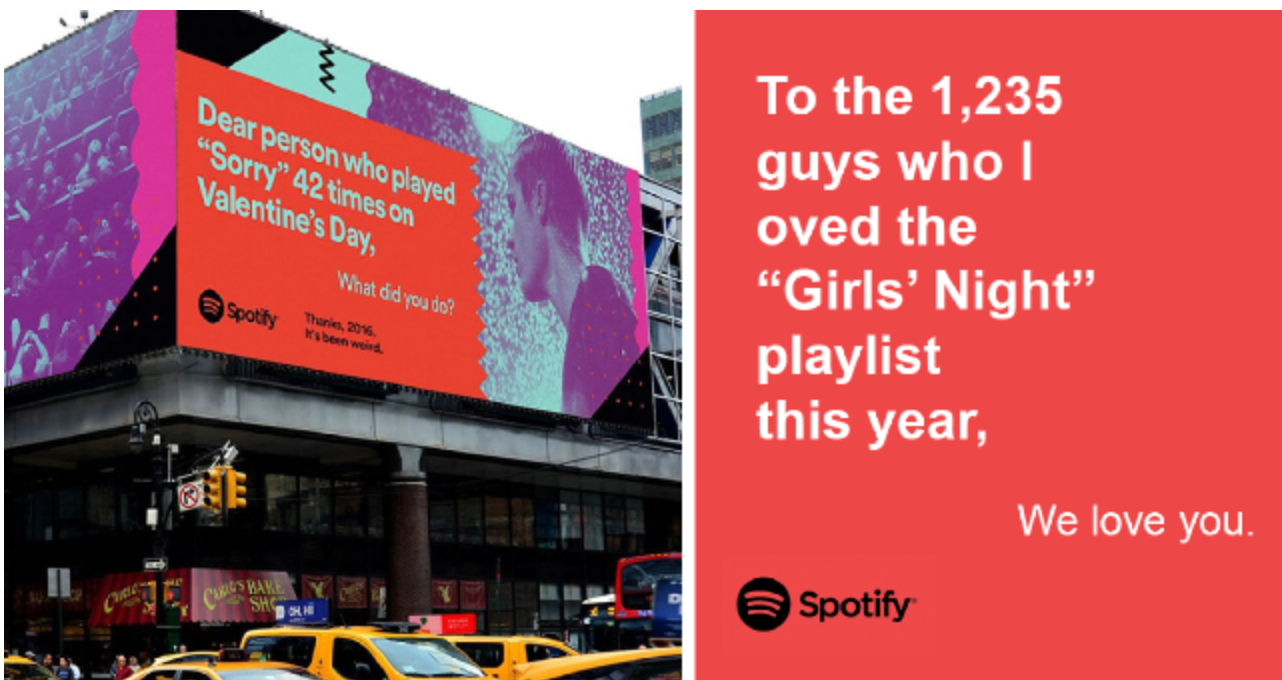
How it started:
In 2015, Spotify had an internal project called “Year in Music,” which was a data-heavy experience that offered Spotify’s general listening stats. However, the brand needed to strengthen loyalty and engagement during a time when music streaming services were becoming more competitive and interchangeable.
A year later, they reimagined the game completely. Spotify already knew the answer to the question “what are most people listening to?” with the Year in Music initiative. So instead of a rinse and repeat, they tapped into the insight that people don’t just listen to music, they use it to define themselves.
Creative Breakthrough:
People love recognition, especially from big brands. Instead of using dry data, Spotify transformed “Year in Music” into a hyper-personalized, user-centric end-of-year summary for all of their listeners. They realized that the user’s data could be reframed as storytelling. No one cares what the general population is listening to; they want a peek behind the curtain of their own listening habits, a reason to be proud of their own music taste.
Spotify Wrapped made users feel unique, seen, and excited for more. The brand used eye-catching, engaging, and cohesive design that was aesthetic enough for users to want to share with their friends. Each share was an ad for Spotify in and of itself. The music streaming service went from a passive app to an active storyteller of your life through music tastes. People downloaded the app so they could receive their own Wrapped the following year. It transformed the use of data and is a campaign that users still get excited about each December.
Big takeaway:
If you work on a brand that collects user data every second of every day, use that as a superpower. Go beyond bragging about the brand and instead give the consumer content they want to brag about. After all, word of mouth is the best advertising a brand can get. Let your product reveal something about its users, and they’ll share it freely.
Campaign 10: Real Beauty—Dove
Cultural Context & Insight:
Ah, yes. Another goodie from the early 2000s. A time when the personal care market was full of airbrushed, idealized beauty ads, and also a time when your mom was probably on her 4th fad diet of the year (did someone say SlimFast?). Shockingly enough, Dove uncovered a crazy insight through global research that found only 2% of women considered themselves beautiful.
There was a huge disconnect between how beauty was portrayed in the media (especially advertisements) and how real, living, breathing, everyday women actually felt. Dove needed to differentiate themselves in an oversaturated market, but they were tired of how personal care ads made women feel.
Their strategy aimed to challenge those long-standing, narrow-minded beauty standards and champion authenticity amid a growing cultural shift where women were also questioning and challenging media-driven beauty standards.
Creative breakthrough:
“Real Beauty” was just that. A campaign that embraced humanity, authenticity, and representation. Dove’s first print and video ads featured women of all shapes, sizes, ages, and ethnicities. No retouching, no models, just beautifully authentic women. It was a bold move, but it worked. It instantly set Dove apart from their competitors and struck a nerve with consumers who were tired of unattainable beauty standards.
The idea wasn’t just about selling more soap; it was the start of a global conversation around self-worth, body image, and the media’s portrayal of beauty. The emotional resonance turned Dove into a purpose-driven brand and gained massive attention.
More importantly, it gained consumer trust. It’s since been a long-term platform, evolving into documentaries, workshops, and even school programs that reinforced Dove’s ultimate mission. “Real Beauty” redefined how brands could use their platform to advocate for cultural change, not just product growth.
Big takeaway:
Advertising can be an exhausting career because you get caught in the riptide of constantly enabling consumerism. A lot of times, we forget that we can use brands as a bridge to start greater conversations. This campaign didn’t start with ingredients or benefits; it started with a powerful human truth.
Great campaigns often start with a tension your audience feels, even if the product seems simple. Take a stand that challenges the industry your brand falls into. You can build brand equity by being the first to say what others won’t, and relating authentically to a larger audience. The best advertising doesn’t just sell a product, it sells a movement.
At its core, advertising is all about being really interested in people. It’s about understanding people, their habits, and figuring out how your product fits into their world. As creatives in this industry, we often overlook our power to shift culture. We allow ourselves to fall into the rat-race that is banner ads, pushing CTAs, and doing whatever it takes to keep the client happy.
But the best work comes from those who push boundaries, ask questions, dig deep, and honestly, find the joy in the work. We study the best work, so we know that creating ideas like “the greats” is possible. All it takes is a little courage, a lot of strategy, and a client willing to buy into something bigger than just their product. When that happens? That’s how history gets made.
If this article got your gears turning, good! That was the goal. We love looking back at great ads. And if you’re thinking, “Wait, how do I actually get into this industry….” we’ve got you. We’re book180, a 100% women-owned, completely online, 6-month portfolio school that helps creatives like you build a creative portfolio that will make your dreams of working in advertising as a copywriter or art director a reality. Bonus campaigns to study up on. So if you’re ready to create work that the world remembers, build your book with us this fall.




